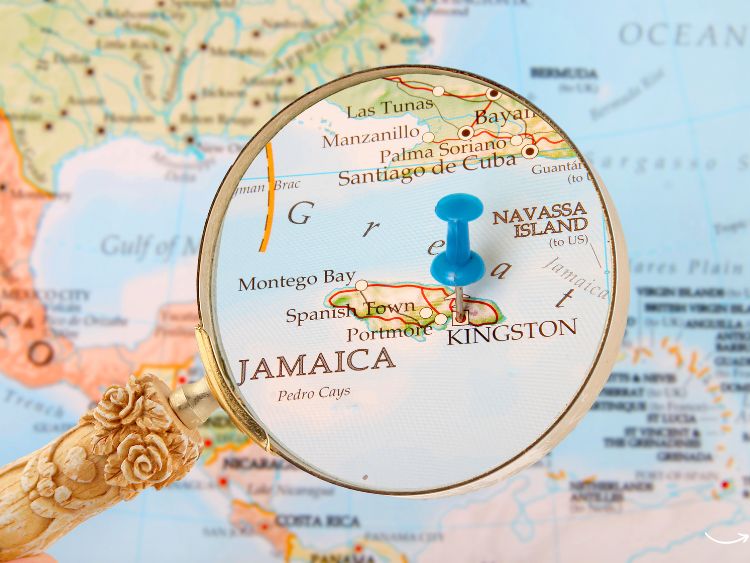Ever wondered how Christianity spread across the Roman Empire so rapidly? Much of it can be attributed to the tireless efforts of the Apostle Paul, whose missionary journeys laid the foundation for the early Christian church. With nothing more than determination, faith, and a few trusted companions, Paul traversed vast regions, facing countless challenges along the way. His travels are meticulously documented in what we now refer to as Paul’s missionary journey map. This map isn’t just a geographical record; it’s a testament to the power of faith and determination. Let’s delve into Paul’s epic journeys and explore the significance of each route, city, and encounter.
The Importance of Paul’s Missionary Journey Map
Paul’s missionary journeys are pivotal in understanding the spread of Christianity. They reveal how Paul strategically chose cities that were not only hubs of commerce but also cultural melting pots. By doing so, he ensured that the message of Christ reached a diverse audience, laying the groundwork for the global reach of Christianity. The Paul’s missionary journey map is a vital tool for historians, theologians, and believers alike, offering insights into the early church’s growth and the challenges it faced.
The Three Missionary Journeys
Paul’s journeys can be broadly categorized into three distinct phases, each with its unique challenges and accomplishments.
1. The First Missionary Journey: The Birth of a Missionary
Paul’s first journey marks the beginning of his missionary work. Alongside Barnabas and John Mark, Paul embarked on a journey that would set the tone for his future missions.
- Starting Point: Antioch
Antioch was the launching pad for Paul’s first journey. This city was a significant center for early Christians and served as a base for Paul’s missionary activities. - Key Cities: Cyprus, Pisidian Antioch, Iconium, Lystra, Derbe
Each of these cities presented unique opportunities and challenges. In Cyprus, Paul confronted a sorcerer named Elymas, demonstrating the power of the Christian God over pagan beliefs. In Lystra, after healing a crippled man, Paul and Barnabas were mistaken for gods, highlighting the cultural and religious differences they encountered. - Challenges Faced
Paul and his companions faced significant opposition, particularly from Jewish communities who were resistant to their message. In Lystra, Paul was stoned and left for dead, yet he miraculously survived and continued his mission. Talk about resilience!
2. The Second Missionary Journey: Expanding the Horizon
Paul’s second journey took him further afield, spreading the gospel to new territories and establishing churches in major cities.
- Starting Point: Antioch Again
Antioch remained Paul’s home base. After a disagreement with Barnabas, Paul chose Silas as his new companion, marking a new chapter in his missionary work. - Key Cities: Philippi, Thessalonica, Berea, Athens, Corinth
This journey was characterized by Paul’s engagement with diverse audiences. In Philippi, he converted Lydia, a prominent businesswoman, and later, a jailer after a miraculous prison break. In Athens, Paul delivered his famous sermon on Mars Hill, engaging with the intellectual elite of the city. - Challenges Faced
Opposition continued to plague Paul’s efforts. In Thessalonica, a mob forced him to flee, and in Berea, Jewish agitators followed him, determined to disrupt his work. Yet, Paul’s perseverance led to the establishment of strong Christian communities in these cities.
3. The Third Missionary Journey: Strengthening the Church
Paul’s third and final journey focused on strengthening the churches he had previously established and addressing theological issues within the early church.
- Starting Point: Antioch, Once More
Antioch’s role as Paul’s base cannot be overstated. From here, he set out to revisit the churches and offer guidance. - Key Cities: Ephesus, Macedonia, Corinth, Jerusalem
Ephesus was a significant city on this journey, where Paul spent a considerable amount of time. His teachings led to the widespread conversion of many, including former practitioners of magic who publicly burned their scrolls in a dramatic display of faith. - Challenges Faced
Paul’s teachings in Ephesus sparked a riot led by local craftsmen who feared the loss of income due to the decline in idol worship. Additionally, Paul’s journey ended with his arrest in Jerusalem, setting the stage for his eventual journey to Rome.
Mapping Paul’s Journeys: A Detailed Analysis
Let’s break down the Paul’s missionary journey map to see how these routes connected and the strategic importance of each stop.
The Geography of Paul’s Missions
- Asia Minor:
Modern-day Turkey, this region was central to Paul’s first journey. Its cities, such as Ephesus and Galatia, were key in the spread of Christianity. - Greece:
Paul’s second journey expanded into Europe, with major stops in Athens and Corinth. These cities were cultural centers, making them ideal for spreading the Christian message. - Italy:
Paul’s journey to Rome, though not traditionally counted as one of his missionary journeys, was crucial. Rome was the heart of the empire, and Paul’s arrival there signified the Christian faith’s reach to the very center of power.
Key Routes and Strategic Decisions
Paul’s routes were not random; they were carefully chosen based on the cultural, political, and religious significance of each location. By targeting major cities, Paul ensured that the message would spread from these urban centers to the surrounding regions. The Paul’s missionary journey map shows us how Paul’s strategy was not just about covering distance but about making a lasting impact.
The Impact of Paul’s Journeys
Paul’s missionary journeys were nothing short of transformative for the early Christian church. Through his travels, Paul:
- Established Churches:
Many of the churches Paul established became the foundation of Christian communities that exist to this day. - Wrote Epistles:
Paul’s letters to the churches he visited form a significant portion of the New Testament, offering theological guidance that continues to influence Christian thought. - Faced Persecution:
Despite facing constant opposition, Paul’s determination never wavered. His resilience serves as an inspiration to countless believers.
FAQs
- Why is Paul’s missionary journey map important?
Paul’s missionary journey map provides a visual representation of the spread of Christianity during its early years. It highlights the strategic locations Paul chose and the challenges he faced in spreading the gospel. - How many missionary journeys did Paul undertake?
Paul undertook three major missionary journeys, each covering different regions and facing unique challenges. - What was Paul’s strategy in choosing locations for his missions?
Paul strategically chose major cities that were cultural, political, and economic hubs. This ensured that the Christian message would reach a broad and diverse audience. - Did Paul face opposition during his journeys?
Yes, Paul faced significant opposition, including persecution from both Jewish and Gentile communities. Despite these challenges, he remained committed to his mission. - What was the significance of Antioch in Paul’s missions?
Antioch served as the base for Paul’s missionary journeys. It was a major center for early Christians and played a crucial role in the spread of Christianity.
Summary
The Paul’s missionary journey map is more than just a record of routes; it’s a testament to the tireless efforts of a man who dedicated his life to spreading the Christian faith. Through his journeys, Paul laid the foundation for the early church, facing opposition with unwavering determination. His strategic choices in cities and regions ensured that the message of Christ reached far and wide, establishing Christianity as a global faith. As we trace Paul’s footsteps across the ancient world, we gain a deeper appreciation for the challenges he faced and the impact he made—a legacy that continues to shape the Christian faith today.
Authoritative Links
- www.biblegateway.com/resources/paul-missionary-journeys
- www.biblicalarchaeology.org/pauls-missionary-journey-map
- www.history.com/topics/early-christianity/paul-missionary-journeys
This concludes our exploration of Paul’s missionary journey map. By understanding the significance of Paul’s travels, we can better appreciate the foundations of Christianity and the remarkable journey of a man whose faith knew no bounds.







